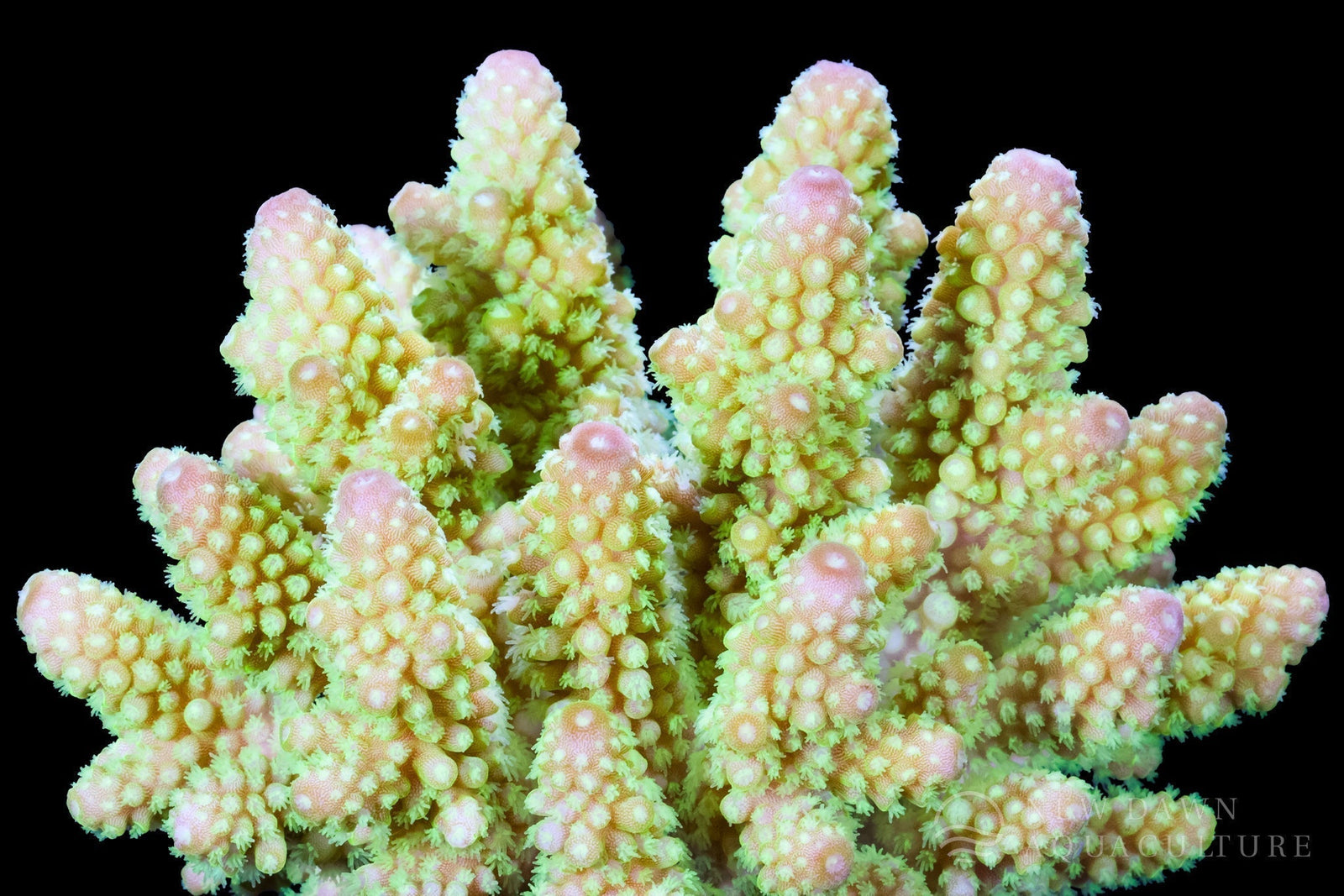Ammplify skips the scary side of “ammonia” and goes straight to reef-ready ammonium, giving your corals the nitrogen jolt they crave without the algae fallout.
What does it do?
Ammplify supplements the tank with ammonium ions. Ammonium is vital in keeping the zooxanthellae population healthy within the corals and in photosynthesis. The zooxanthellae are the algae that live in a symbiotic relationship within the coral tissue and provide it with the nutrients it needs to survive. It is important to note that this product is ammonium not ammonia.
Well isn’t Ammonia bad?
Contrary to popular belief, ammonia isn’t as bad as it’s made out to be! That is, when it is in the correct “form” of ammonium. Below we will flesh out not only the differences between ammonia and ammonium but the benefits and concerns raised with dosing ammonium.
What’s the difference?
To start, ammonia (NH3 )has no charge and one less hydrogen molecule while ammonium(NH4+ ) is charged and has an additional hydrogen. This product does not release straight nitrogen/nitrate into the water as ammonia can. Instead, Ammplify breaks its ammonium blend down into its ions leaving ammonium as its own ion making it easier for corals to uptake[2,4,6]. In fact, a multitude of scientific literature agrees that free nitrates are not the preferred nitrogen source for corals but ammonium is[1,2,4,6]. This is because Nitrate requires more energy to break apart than ammonium does[4].Hence the uptake and breakdown of Nitrate is a lengthier and more energy consuming process[2,4].
The good, the bad, and a new outlook.
Before we get into the arguments, we must go over what the zooxanthellae are as they were a big factor in why we looked into ammonium dosing in the first place. The zooxanthellae that form a symbiotic relationship within the coral tissue is actually considered to be a type of algae in the family Symbiodiniaceae and phylum Dinoflagellata. For photosynthesis to occur the zooxanthellae require nutrients, namely nitrates and phosphates to create byproducts such as sugar, lipids, fats, proteins etc[1,2]. After photosynthesis occurs, around 95% of the by-products of photosynthesis from the zooxanthellae are redirected to the coral, making this symbiotic relationship crucial to the coral's survival[1,2].
So what does this have to do with ammonium? Well, multiple scientific articles have stated that Ammonium is more available/easier for corals to uptake than just free Nitrogen [1,2]. Why is this the case? As we discussed before, free Nitrate requires more energy to break apart than ammonium does[4,6].Hence the uptake and breakdown of Nitrate is a lengthier and more energy consuming process[4]. Additionally, if we think about what is often kept in a reef tank, or out in the open ocean, we can find a multitude of different sources of ammonium. The most common would be from fish excrements, rotten food, or nutrient sinks in substrates. Therefore, ammonium is actually in every tank! On top of that, ammonium has been shown to reduce the harmful effects in coral in times of stress[2,4,7]. This is done by keeping the zooxanthellae population at their normal, and in some cases, even elevated levels[2]. By keeping the zooxanthellae population stable, this reduces the risk of polyp bail out and bleaching. Better yet, ammonium has also been shown to be a better and necessary feed for bacteria[4,7].
Now, hobbyists are correct that too much ammonia can be dangerous to the tank. We automatically assume the worst, and think of ammonia overdosing when talking about ammonium. High levels of ammonia can occur for a number of reasons. Ammonia overdosing can come from: overfeeding and letting the food sit and rot in the tank, from animal death, not enough bacteria in the tank to “eat” the ammonia, or the overdosing of a product. Some of the effects of this are: receding corals, dead livestock, and lots of water changes. While this mainly focuses on ammonia, ammonium can cause your nitrates to slowly creep up. This is the main concern for Ammplify, but with regular testing will not become a problem.
While we understand dosing ammonium may seem a bit daunting, the literature and results can speak for themselves. Additionally, we must not forget that Nitrate is crucial to the tank, but our outlook on the products used to get the nitrates in the tank may need to be reconsidered.
Sources
- Burkepile, Deron & Shantz, Andrew & Adam, Thomas & Munsterman, Katrina & Speare, Kelly & Ladd, Mark & Rice, Mallory & Ezzat, Leïla & Mcilroy, Shelby & Wong, Jane C Y & Baker, David & Brooks, Andrew & Schmitt, Russell & Holbrook, Sally. (2020). Nitrogen Identity Drives Differential Impacts of Nutrients on Coral Bleaching and Mortality. Ecosystems. 23. 1-14. 10.1007/s10021-019-00433-2. https://par.nsf.gov/servlets/purl/10235076
-
Fernandes de Barros Marangoni, L., Ferrier-Pagès, C., Rottier, C., Bianchini, A., & Grover, R. (2020). Unravelling the different causes of nitrate and ammonium effects on coral bleaching. Scientific Reports, 10(1), 11975.
-
Kirchman, David L. "The uptake of inorganic nutrients by heterotrophic bacteria." Microbial Ecology 28.2 (1994): 255-271.
-
Nils Rädecker, Claudia Pogoreutz, Christian R. Voolstra, Jörg Wiedenmann, Christian Wild, 2015. Nitrogen cycling in corals: the key to understanding holobiont functioning. Trends in Microbiology, Volume 23, Issue 8, pg 490-497, https://doi.org/10.1016/j.tim.2015.03.008.
-
Roberty, S., Béraud, E., Grover, R., & Ferrier-Pagès, C. (2020). Coral Productivity Is Co-Limited by Bicarbonate and Ammonium Availability. Microorganisms, 8(5), 640. https://doi.org/10.3390/microorganisms8050640
-
Wai Siong Chai, Chee Hong Chew, Heli Siti Halimatul Munawaroh, Veeramuthu Ashokkumar, Chin Kui Cheng, Young-Kwon Park, Pau Loke Show, 2021. Microalgae and ammonia: A review on inter-relationship,Fuel. Volume 303, https://doi.org/10.1016/j.fuel.2021.121303.
-
Xiang, Nan & Rädecker, Nils & Pogoreutz, Claudia & Cardenas, Anny & Meibom, Anders & Wild, Christian & Gärdes, Astrid & Voolstra, Christian. (2022). Presence of algal symbionts affects denitrifying bacterial communities in the sea anemone Aiptasia coral model. ISME Communications. 2. 105. 10.1038/s43705-022-00190-9.


